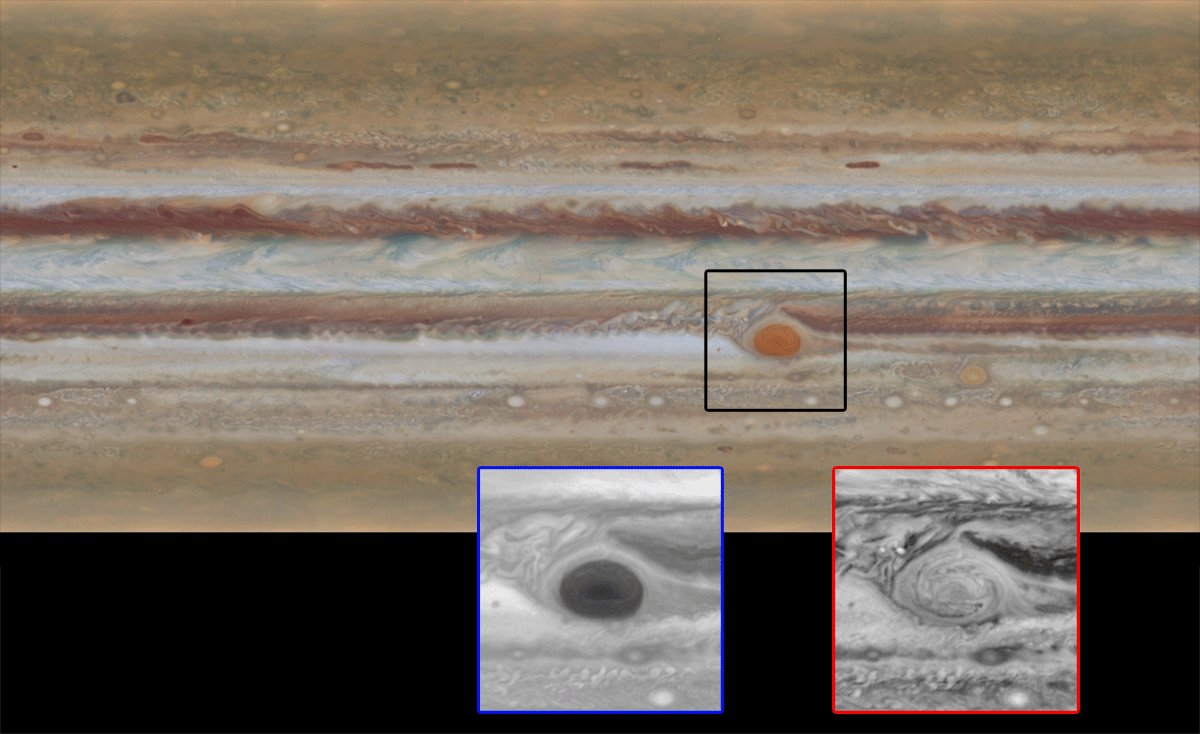NASA's Jupiter Images Reveal Shrinking 'Great Red Spot,' Rare Waves In Northern Hemisphere
Jupiter’s famous “Great Red Spot” -- a persistent and gigantic storm that has been rumbling in the gas giant’s southern hemisphere for at least the past 300 Earth years -- is just one of the many defining characteristics of the planet’s dense and dynamic atmosphere. Since this vortex, which is large enough to engulf three Earths, was first spotted in 1664, scientists have noticed that it has been shrinking.
New images, obtained using NASA’s Hubble Space Telescope, confirm that the Great Red Spot continues to shrink and become more circular as it weakens. And, as the images -- taken over a span of 10 hours -- show, the storm is now contracting at a faster-than-usual rate.

The new maps of Jupiter are the first in a series of annual portraits of the solar system’s outer planets. In a statement, NASA said that Hubble would dedicate some time each year to conduct observations as part of the Outer Planet Atmospheres Legacy Program. In addition to Jupiter, Hubble also captured images of Neptune, Uranus and Saturn, which will be released later.
“The long-term value of the Outer Planet Atmospheres Legacy program is really exciting,” Michael H. Wong of the University of California, Berkeley, said, in a statement released Tuesday. “The collection of maps that we will build up over time will not only help scientists understand the atmospheres of our giant planets, but also the atmospheres of planets being discovered around other stars, and Earth’s atmosphere and oceans, too.”
The images from Jupiter also show a strange filamentary structure not seen previously in the core of the Great Red Spot, which is more orange now than it used to be. The wispy structure rotates and twists throughout the 10-hour span of the image sequence, getting distorted by winds blowing at over 330 miles per hour.
Another oddity was spotted in the planet’s northern hemisphere -- a wave-like structure that had been spotted on the planet only once before, decades earlier, by Voyager 2 during its flyby in 1979.

“Until now, we thought the wave seen by Voyager 2 might have been a fluke,” said co-author Glenn Orton of NASA’s Jet Propulsion Laboratory in Pasadena, California. “As it turns out, it’s just rare!”
Although the exact nature of the wave is not known, one theory suggests that it may be a baroclinic wave, which is sometimes seen in Earth’s atmosphere when cyclones begin to form. Researchers believe that the wave may have originated in a clear layer beneath the clouds, and become visible when it propagated into the upper cloud deck.
“Every time we look at Jupiter, we get tantalizing hints that something really exciting is going on,” Amy Simon, a planetary scientist at NASA’s Goddard Space Flight Center in Greenbelt, Maryland, said, in the statement. “This time is no exception.”
© Copyright IBTimes 2024. All rights reserved.






















